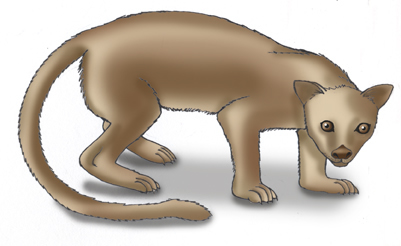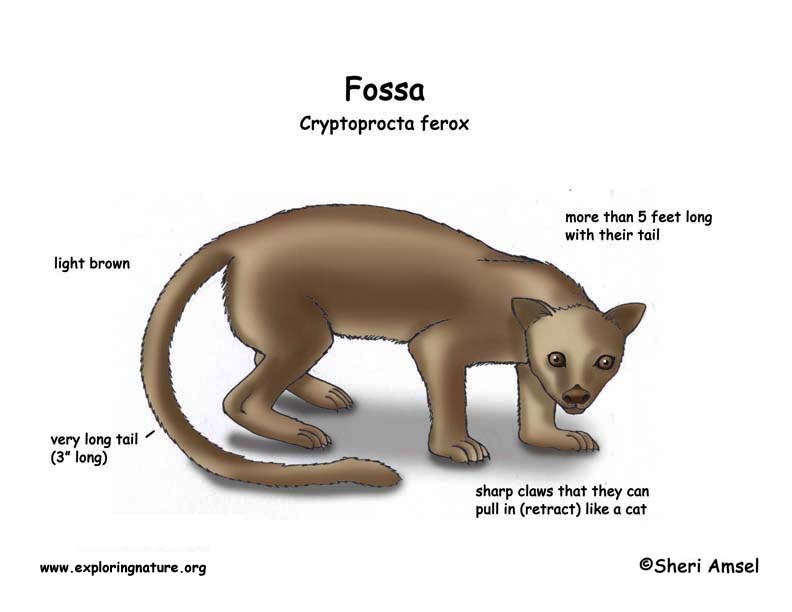


They are found on the island of Madagascar.
They live in dry, deciduous coastal, mountain forests.
They are 2.5 feet long (8 cm) with a long tail that is another 3 feet long (90 cm). They have sharp claws that they can pull in (retract) like a cat. They can weigh more than 20 pounds (10 kg). They are light brown.
They are active mostly at night (nocturnal) or early in the morning. They hunt on the ground and in the trees. They are good climbers and can leap from tree to tree. They live alone except to mate.
They eat animals (carnivores), including lemurs, reptiles, rodents, and insects.
Their only predator is man, though young fossa are eaten by hawks or snakes.
Females are pregnant for 3 months (gestation) and have 2-4 babies.
They can live 20 years in captivity, probably less in the wild. They are listed as endangered.
Kingdom: Animalia
Phylum: Chordata
Subphylum: Vertebrata
Class: Mammalia
Order: Carnivora
Suborder: Feliformia
Family: Eupleridae
Subfamily: Euplerinae
Genus: Cryptoprocta
Species: Cryptoprocta ferox
When you research information you must cite the reference. Citing for websites is different from citing from books, magazines and periodicals. The style of citing shown here is from the MLA Style Citations (Modern Language Association).
When citing a WEBSITE the general format is as follows.
Author Last Name, First Name(s). "Title: Subtitle of Part of Web Page, if appropriate." Title: Subtitle: Section of Page if appropriate. Sponsoring/Publishing Agency, If Given. Additional significant descriptive information. Date of Electronic Publication or other Date, such as Last Updated. Day Month Year of access < URL >.
Amsel, Sheri. "Fossa" Exploring Nature Educational Resource ©2005-2024. December 13, 2024
< http://exploringnature.org/db/view/452 >
